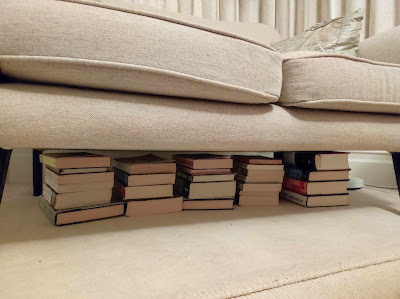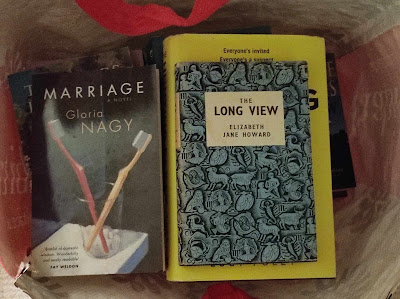 |
| The Blind Girl by John Everett Millais |
Back in October, a neighbour kindly tipped me off about an exhibition starting that month at the Barber Institute of Fine Arts in Edgbaston. I recently remembered that it was due to finish on 26th January, so I girded my loins sharpish and bought a train ticket to Birmingham for the following day. I also carefully researched bus stops and timetables, and found the journey surprisingly quick and easy on public transport. As I got off at University North Gate, I noticed the sign on the driver's cab door advertising the different kinds of fare available.
"Oh", I said to him, "I should have bought a day ticket and saved myself a quid."
"Yeah, you should" he replied matter of factly, clearly not feeling an iota of regret that he didn't suggest that option.
From the bus stop it was a quick scurry through the jumble of concrete campus buildings to reach the Barber Institute itself, an elegant Art Deco building with heraldic motifs on the front facade, adding a welcome touch (note that this is a "pop"-free zone!) of colour.
 |
| Source: Wikimedia Commons ~ Gavin Warrins |
There are three important things to know about the Barber Institute: firstly, it was founded in 1932 by a woman - Lady Martha Constance Hattie Barber, née Onions - a scion of the Worcestershire Onions family of bellows makers. Yep, not the branch in Dudley, for those who know their Onions. ;) Lady Barber was 63 at the time, which goes to show that it is never to late to embark on new ventures. Sadly though, she died four months later, seven years before the Institute opened its doors to the public.
The second thing to know about the Barber Institute is that it doesn't have a cafe. Instead it has a sort of "cafe nook", such as you might find in the foyer of a budget motel when looking in vain for the breakfast room. There is a hot drinks machine and a fridge with cold drinks and a limited (rather sad looking) selection of sandwiches, plus a couple of racks of crisps, biscuits and chocolate bars, but you'll be disappointed if, like me, you were envisioning a bowl of piping hot pumpkin soup with croutons and a ciabatta roll. No, you go and pay for your items in the gift shop, including an empty cup, and take it back to the machine to make your own beverage. There is a pleasant seating area in the entrance hall, but it still feels a bit makeshift. I mistakenly thought I'd seen a knife and fork symbol on Google maps, but having checked, there is only one of an artist's palette to denote a gallery. There is certainly no food item you can buy there that requires either utensil, even if the gift shop had been able to dispense plates as well as cups. I should stress that the Barber in no way overstates its facilities: the unusual refreshment logistics are clearly stated in the FAQs of its website.
Apologies for that big catering digression! The third thing to know about the Barber is that back packs (even very small ones) are not allowed to be worn on your back, in case you knock over/into any of the exhibits. Backpacks don't have to be left in a secure cloakroom, not that there is one, but must instead be worn on your front, like those baby papooses minus the baby, or a ginormous fanny pack. The museum staff did not seem to entertain the possibility that you might still knock into things front ways on, which I could see happening as I leant over statuary to peer at the explanatory blurb of a painting behind.
I decided to visit the scent-themed exhibition first, the interactive part of which came with this health warning:
I guess they have to cover themselves in case of hyperallergic visitors, and I hope it didn't deter anyone else who eschews perfume as something a bit "chemically". The scented component of the exhibition - of which more anon - was certainly very localised in a corner of one room.
Without further ado, here is the background to the exhibition from the Institute's flyer:
"Paintings of the Pre-Raphaelite and Aesthetic movements are rich in references to scent. Linked with concepts of hedonism, beauty, and synaesthesia, fragrance is an often-forgotten aspect of these famously sensual works. Ideas of aroma and smell also intersected with the most heated issues of Victorian society, including sanitation, urban morality, immigration, race, mental health, faith, and the rise in women's independence."
The exhibition is the brainchild of Dr Christina Bradstreet, author of "Scented Visions: Smell in Art, 1850 - 1914." The paintings she has curated fall into one of three sub-groups, each connoting a different scent experience - whether good or bad(!). In some pictures the scent link is more overt, for example a woman smelling flowers or holding a perfume receptacle of some kind, whereas with others you have to infer the olfactory dimension to the scene, such as the painting of a sex worker at her window, beyond which lies a whiffy sewage-ridden River Thames. (Thoughts of the Past by John Rodham Spencer Stanhope, painted in 1859, shortly after The Great Stink in London.)
 |
| Close up from Lilium Auratum by John Frederick Lewis |
Spring Awakenings ~ A number of the paintings portray women in garden or pastoral scenes, surrounded by flowers, "lost in reverie" or in varying degrees of transport. There is a freshness and a dreamy quality to these pictures, with rainbows adding a spiritual dimension. As Christina Bradstreet explains in her introduction to the exhibition, the Victorian physiologist Alexander Bain believed that multisensory experiences were the appropriate response to imagery, whereby a picture of flowers "gives an agreeable suggestion of the fragrance", triggering memories of smelling real flowers.
 |
| Gentle Spring by Frederick Sandy |
All Smell is Disease ~ There is, however, a darker side to scent in the Victorian era, and certain smell memories are ones that you really wouldn't want to invoke, not least because they were thought to be linked to physical or mental decay. Until the discovery of germs, there was a widespread belief that miasma - the stench of decomposing matter - was a direct cause of diseases like cholera or typhoid, and even a cloying, animalic perfume was capable of inducing lethargy and moral turpitude. In the painting below, there is a poisonous potion emitting violet vapours in Medea's hand (about to be deployed on her murderous spree!), and a discarded rose at her feet, possibly symbolising her broken relationship with Jason. Violet perfumes were very much in vogue at that time, making this scented concoction the very essence of toxic femininity.
 |
| Medea by Evelyn de Morgan |
Bells & Smells ~ There is only one painting in this group, which represents the furore over the use of the liturgical trappings of Roman Catholicism in High Anglican churches - things like bells, altar lights and incense censers. By 1876, incense burning at any point in church services had been banned.
 |
| A Saint of the Eastern Church by Simeon Solomon |
The AirParfum Experience
This brings me to the immersive aspect of the exhibition: visitors press a button on a machine and release a puff of a particular scent that is associated with a specific painting, thereby enabling them to experience it in a multisensorial way.
There was also the option to sniff the end of a stopper instead if you didn't want a whoosh of scented air in your face, even fleetingly. It was clever how each scent disappeared so quickly after activation, allowing many visitors to use the machine in quick succession.
Christina Bradstreet collaborated with Gregorio Sola, a Senior Perfumer at Puig, which invented the AirParfum technology. He is an expert in the field of developing fragrances for public spaces, and created a similar installation around a single painting at the Prado in Madrid (The Sense of Smell by Jan Brueghel and Rubens), with no fewer than ten scents all conveying different aspects of this work. Here there are three in total, of which two relate to Millais' The Blind Girl. The first of these conjures up the rain soaked meadow / petrichor, clouds, the ditch, and a cotton T-shirt, with added aldehydes to suggest luminosity and brightness, while the second homes in on the blind girl's wool and cotton shawl, which her sister is discreetly sniffing. The third scent evokes the scene in Solomon's A Saint of the Eastern Church (a mix of incense, brass, candles, wooden columns, vestment fabric, and the sprig of myrtle held by the saint). Sadly only this last one worked for me, while the other two were more like air freshener or a rather pungent functional fragrance.
It may be that the team did indeed capture the very things they set out to, but those scents were simply disagreeable to my nose and I couldn't get past that. The incense one, however, was so congenial that I would happily have worn it. It is a shame, because I love the concept behind AirParfum, and welcome any attempt to promote fragrance to the public, as well as the specific aim of bringing these paintings to life through an added sense. Apparently the installation at the Prado increased the dwell time in front of the scented paintings from 32 seconds to a whopping 13 minutes! I know reactions to fragrance are very personal, and the gentleman who stepped up after me liked the other two and not the incense one ;), plus it isn't even about liking a scent, but rather parsing its elements and making a connection with the corresponding painting. Having read a detailed account of the creative process behind each scent, including which notes were used to convey which aspects of the paintings, it is clear that the fragrances were meticulously and thoughtfully crafted, yet for whatever reason I could only "read" one as a match to its art work. Maybe I should have spent longer, activating as many puffs as it took to fully experience The Blind Girl olfactorily, but I was conscious of people behind waiting to use the machine. Had I chosen to go in the week I could probably have taken my time.
Overall though, I found the exhibition fascinating and well worth a visit: the paintings were glorious, and could be appreciated even by those not interested in perfume. It also made me realise that actually, unless we are talking abstract art, pretty much any scene you cared to paint would have at least an implicit scent component...you just have to let your olfactory memory be jogged. To be honest, I wouldn't have associated fragrance with the painting of The Blind Girl off the bat, which is the main focus of the AirParfum experience, though I know better now. And having been primed to look for scented cues through the prism of Pre-Raphaelite art, I am raring to apply it to other paintings in the gallery, and beyond - whether intentional or not...!
I would love to hear from anyone else who has been to the exhibition - or who catches it on its future travels (eg to the Watts Gallery in Guildford) - and am especially keen to learn people's take on the AirParfum trio of scents.
For more information, there's an interesting podcast with Christina Bradstreet here.










